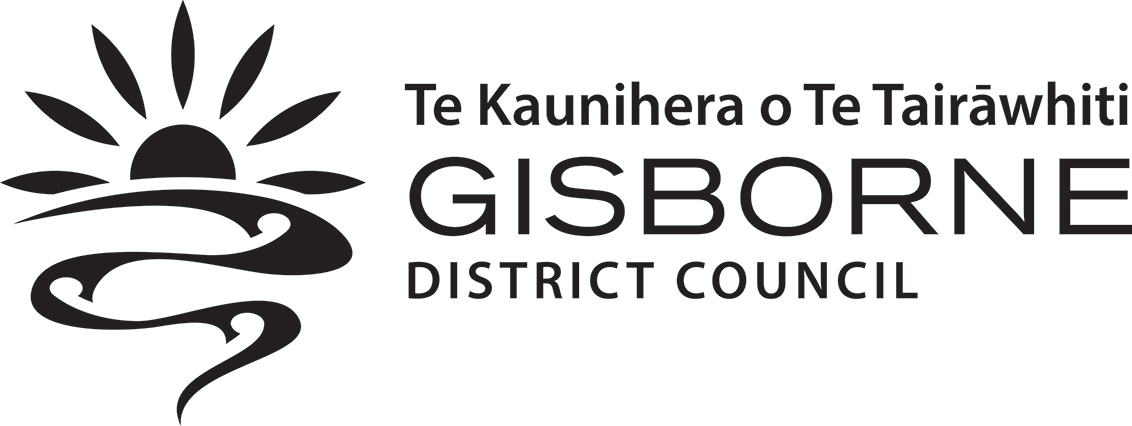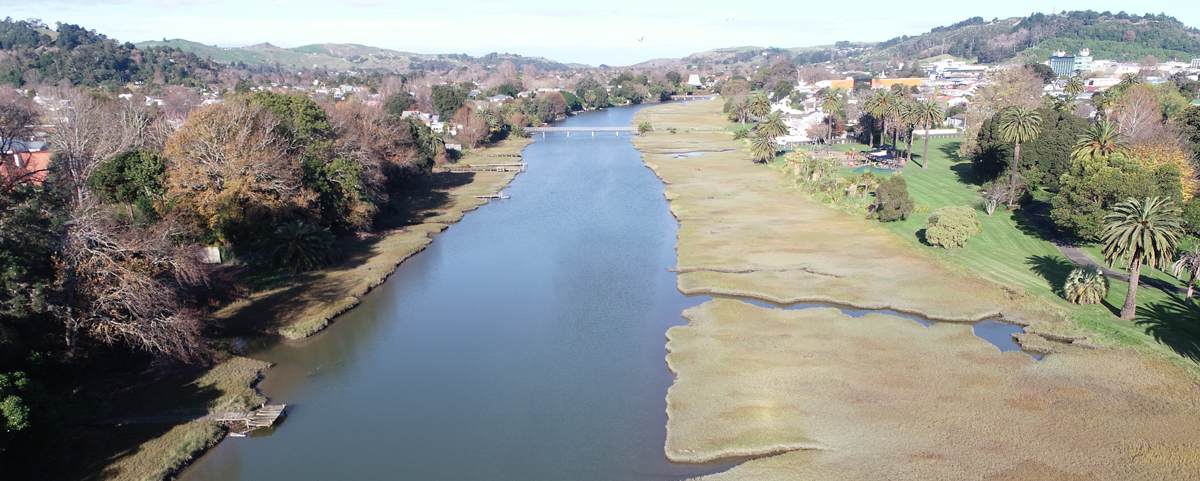Spartina grass is being removed from the Taruheru River because it's causing serious harm to our river ecosystem. It traps sediment and raises land levels, pushes out native habitats for fish, birds and shellfish and collects urban pollutants like heavy metals. It also reduces oxygen in the water making life harder for aquatic species.
Removing spartina helps restore the health of our river. It brings back mudflats and saltmarsh habitats for native species like mud crabs, shellfish and wading birds. It allows us to replant native vegetation, improves water quality and oxygen levels and restores natural tidal flow. These changes support biodiversity and make the ecosystem more resilient.
Stage 2 - November 2025
Spraying was carried out on the mudbanks between Peel Street Bridge and Lytton Road Bridge from 5 - 17 November 2025, using the herbicide Haloxyfop-methyl. It was applied by drone, hose reel spray unit and knapsack depending on the location. This was done in line with EPA regulations for controlling aquatic pest plants.
Harvesting notice: No shellfish harvesting or fishing within 500m of the sprayed area. This restriction last for 5 days after spraying.
Stage 1 - trial

Spray trial January 2024
Spartina grass on the mudflats of the Taruheru River from the Peel Street Bridge to the Marina boat ramp was sprayed as a trial in January 2024.
By March the sprayed area was dying off and the spartina banks clearly showed slumping and were starting to be broken down and removed by the normal tidal flow.
The use of the herbicide treated the spartina without causing adverse effects on non-target plants, fish or animals.
Sampling overview
11 and 13 January (Pre-spray): Water and sediment samples (IDs 240112-078 & 240113-040) showed no detectable contaminants.
17 January (Post-spray): 2 water samples and one sediment sample (ID 240117-117) were collected.
- Sediment: All results non-detect.
- Water: Two low-level detections of Atrazine, a commonly used herbicide:
- 0.17 µg/L at Turanganui River – Gladstone Bridge
- 0.14 µg/L at Taruheru River – Peel Street Bridge
Context and interpretation
- Atrazine levels were just above the maximum acceptable value for drinking water — however, drinking water is not sourced anywhere near these sites, so this comparison is only to illustrate how low the detected levels were.
- Atrazine can enter waterways via agricultural runoff, not necessarily from direct spray.
- Tidal flushing at both bridge sites likely helped prevent any accumulation of pesticide in sediment.
Ongoing monitoring
Monthly sampling at multiple urban and spartina sites includes:
- Suspended sediments
- Bacteria
- Metals
- Hydrocarbons (eg petrol, paint)
Pesticides are not routinely monitored unless there's a specific reason.
Summer recreational monitoring focuses on bacteria levels, with results shared via LAWA
About Atrazine
- Type: Herbicide
- Use: Commonly applied to control broadleaf and grassy weeds
- Environmental Note: While low-level detections like these are not uncommon post-spray, Atrazine is known to be persistent in aquatic environments and can impact aquatic life at higher concentrations.
Reports and documents
The following documents support the project's environmental monitoring, ecological benefits and EPA permission.
No results found for ""
Frequently asked questions
- Re-establishes mudflats and saltmarsh habitats for native species like mud crabs, shellfish, and wading birds.
- Enables replanting of native vegetation to support biodiversity.
- Restores natural tidal flows and sediment movement.
- Improves water quality and oxygen levels.
- Supports native biodiversity and strengthens ecosystem resilience.
Yes. Spartina traps contaminants in sediments.
Its removal allows natural flushing to disperse pollutants and reduce toxicity.
Fish
- whitebait - īnanga
- flounder
- mullet
- kahawai
Birds
- Poaka - Pied Stilt
- Torea – Oystercatcher
- Matuku Moana - White-Faced Heron
- Kotare - Kingfisher
- Kotuku Ngutupapa - Royal Spoonbill
Shellfish
- cockles - tuangi
- pipi
- mud snails
Benthic invertebrates
- polychaetes
- molluscs
- crustaceans
No - removing Spartina won’t make a difference to flood risk. That’s because peak flood levels in the urban part of the Taruheru River are mostly controlled by the water levels in the Waimata and Turanganui rivers where they meet the Taruheru.
While some sediment may shift as the Spartina breaks down, it’s not expected to increase flood risk either.
Approximately 10 hectares of Spartina will be removed from the Taruheru River estuary.
We're using a targeted herbicide called Haloxyfop-methyl to spray the Spartina.
It's applied by drone or a knapsack and spray unit with a hose reel depending on the location.
Spraying happens at low tide when the weather is dry and calm.
The herbicide is EPA-approved and breaks down quickly, with very low residue detected after application.
No nesting birds use the Spartina mudflats and regular surveys are underway to confirm that.
Water quality is tested before and after spraying by independent contractors. Plus, long-term ecological monitoring is built into the project to track environmental impacts over time.
The dead Spartina will slowly break down with the help of the tides.
Once it's cleared, we’ll replant native vegetation to bring back important habitats, especially for taonga species like mud crabs and shellfish. We’ll also keep monitoring the area to track how the ecosystem recovers over time.
Who's leading the project?
The project is led by Haumanu Tū Ora (H2O), a collaborative initiative between Council and mana whenua. Together, we're working to restore the health of urban waterways in Tūranganui a Kiwa.
The project is funded by Ministry for the Environment and Council.
For more information
- Follow Haumanu Tū Ora on Facebook
- Visit our Pest and Weeds Hub


